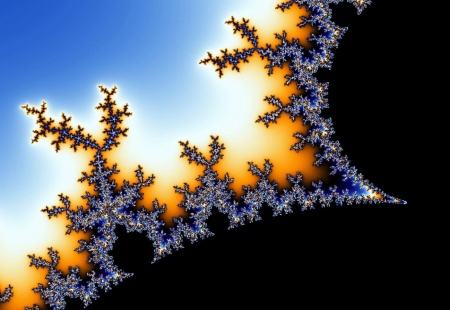Fractal

|
Fractal
/ˈfrakt(ə)l/ (n.)
A fractal is a geometrical figure, each part of which has the same statistical character as the whole. Fractals are useful in modelling structures (such as snowflakes)[1] in which the same patterns recur at progressively smaller scales, and in describing partly random or chaotic phenomena such as crystal growth and galaxy formation.
The fractal is also a useful metaphor to describe the legal eagle’s approach to risk-management through the medium of the legal contract, and the magnetic attraction that legal eagles feel towards negotiation oubliettes. The more powerful the lens with which you look at it, the more risk you will see.
Metaphor time, folks.
In the normal geometry of the space-tedium continuum, lexophysicists represent perfectly documented legal risk as a dead straight line and an unaddressed risk presents as a kink or bend in the line. Therefore, under the standard model, the fundamental objective of legal engineering is achieve a maximally straight line through space-tedium.
The legal challenge upon encountering a kink in such a line is to fix it. The smaller the risk, you might think, the easier the fix. But, alas, this takes no account of the fractal geometry of the space-tedium continuum.
Imagine we have seen and flattened out just such a kink, perhaps applying an unguent “notwithstanding anything to the contrary in the foregoing contained”, or some such placatory wording. For should one screw down the resolution on the ESPER machine to zoom in on that flattened kink — to make sure it is nice and straight now — we see to our consternation that there is a little kink in the middle of the old kink. For this kink is a fractal. However close we go; however elaborate our means of fixing the last kink, as we descend into the weeds to check our engineering, we will find further, smaller kinks.
Now note what is happening here: as we approach that asymptotic point of intolerable tedium (the tiniest measurable particle of which is the Biggs hoson, by the way), at the same time the legal superstructure we create to eradicate this ineradicable imperfection grows ever less wieldy. We are creating a monster. What is worse, we may pass through an event horizon, beyond which there is no lexophysical way out: we are sucked ever onward by the overwhelming gravitational forces inside a negotiation oubliette. We are compelled to continue even to our destruction, dashed on the infinitesimal, pointless rocks of tedium, propelled by the colossal weight of the markup we have generated.
There are some famous examples.
For example, it is not uncommon for a custodian to seek an indemnity for extraordinary costs it incurs in holding its clients’ assets and carrying out its clients instructions with regards to those assets. HEY! WAKE UP!
Now in truth, there is a very small risk that a custodian will suffer such extraordinary costs, and if it does, they are likely to be minimal, the parties will sort them out quickly and on the strength of the commercial imperative, and without a backward glance to the legal contracts. This is just the Custodian going “look, I’m doing you a solid, you don’t pay me a lot for it, so it’s only fair if I get hit with some unexpected cost for looking after your assets, I can pass it on to you.”
There will be predictable skirmishes predicated on the outrageous width of the indemnity, and the client-side legal eagle will engage some favourite tropes: good faith, commercially reasonable manner, absence of negligence, fraud and wilful default. All those kinds of things. This is the equivalent of zooming i